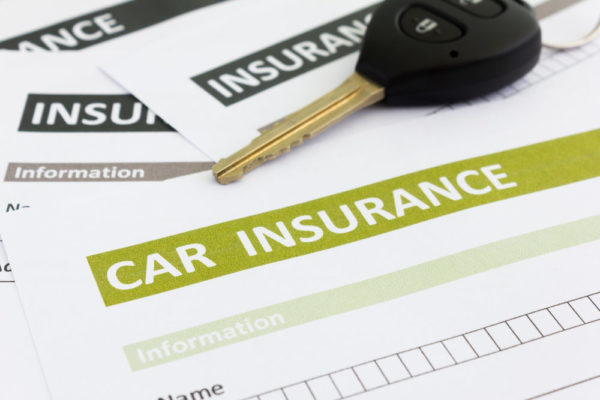In its most recent study, the National Highway Transportation Safety Administration (NHTSA) estimated the economic costs of motor vehicle accidents at more than $230 billion dollars… for just one year.
Private insurance companies are estimated to pay approximately half that amount to settle claims and other accident-related expenses. With more than $100 billion at stake each year, it’s no surprise that insurers do everything they can to be keep costs in line, including reducing or denying claims.
While most accidents do not involve major property damage or serious injuries and may result in fairly straight-forward claims, more than one-third of all accidents do result in injury, with 2.2 million people hurt and close to 40,000 crash-related deaths, each year.
When significant accidents occur, causing heavy property damage and serious injuries, including death, it is important to have good information about the following: the basics of motor vehicle insurance, strategies to help you work your way through the claims process, and what to do to protect yourself and your family when you’re involved in a multi-car/multi-party accident or will be filing a substantial claim.

Table of Contents
The Basics: How Insurance Works
When you first consider it, motor vehicle insurance seems like a very straightforward transaction. You pay premiums to your insurance carrier before an accident occurs, they pay for the costs of the damages when an accident happens. But with a wide-variety of insurance products and different levels of coverage available, and with each driver having their own claims history and separate adjusters making their own decisions about what an accident is worth, the real truth is that auto insurance is an individual experience with different results for different people.
It’s important, then, to know what kind of insurance is available and how it affects you and your family in the event of an accident.
Liability Insurance – Liability coverage pays for property damage and bodily injury that comes about as a result of an accident in which you are at fault. Property Damage Liability covers whatever damage your car does to someone else’s property – such as their car, a fence, a house, etc. Bodily Injury Liability covers whatever injuries and/or deaths you cause because of the accident. Bodily Injury claims cover medical bills, lost wages, as well as pain and suffering.
In general, liability insurance is sold in predetermined coverage amounts. For example a policy that offers coverage of “100/300/50” means that you are insured for $100,000 in bodily injury liability per person with a maximum of $300,000 in bodily injury per accident and then $50,000 in property damage.
While this is the level of coverage suggested by the insurance industry, state laws vary widely, with some states requiring as little as 10/20/5 and other states requiring no liability insurance, at all. The important thing to remember when deciding on coverage is to choose a level that is responsible both to yourself and to anyone you might hurt in an accident.
Often times, a significantly higher coverage requires only a small amount more money per month on your monthly premium. For example, in one state a 100/300/50 policy is only about $12 more per month than a 50/100/25 policy. A little higher premium now can mean a lot more protection for someone who is later injured in an accident.
Collision Insurance — Collision coverage pays for any physical damage that happens to your vehicle as a result of a collision with another vehicle or object. Because collision only covers losses to your vehicle, it is important to balance your premiums and deductible against the cash value of your car.
Uninsured / Underinsured Policies – Uninsured and Underinsured policies protect you during an accident where the other driver is at fault and has little or no liability coverage. This insurance is some of the most important coverage you can carry, because it costs very little but can mean a lot in the case of a serious accident or lengthy recovery. Many attorneys whose practice centers on auto accidents and personal injury suggest carrying “as much of this type of insurance as the company will sell you”.
To learn more about different types of Insurance Coverage…
QUICK LINK – Auto Insurance Types
QUICK LINK – How Car Insurance Works
QUICK LINK – CarInsurance.com Coverage Definitions
Strategies For the Claims Process
When someone is involved in auto accident, their first questions are generally about practical matters. What’s going to happen to my car? Who is supposed to pay for my medical bills? If someone else is at fault, whose insurance covers this and where do I file my claim?
The following are answers to basic questions along with some key strategies to help you move through the claims process successfully:
 Where do I file my claim? – When trying to decide where to file your claim (with your insurance company or with the other driver’s insurance), sometimes the best decision is to file it in both places. While different issues around the claim are being sorted out, there’s nothing illegal about filing claims against both your own insurance and the other drivers. You obviously could not collect on both, but by filing with both you get a chance to see who offers the best estimates on repairs and decide which insurer offers the best situation in terms of deductibles.
Where do I file my claim? – When trying to decide where to file your claim (with your insurance company or with the other driver’s insurance), sometimes the best decision is to file it in both places. While different issues around the claim are being sorted out, there’s nothing illegal about filing claims against both your own insurance and the other drivers. You obviously could not collect on both, but by filing with both you get a chance to see who offers the best estimates on repairs and decide which insurer offers the best situation in terms of deductibles.
Should I sign a release? — Before you accept payment and sign a release, make sure what you’re signing is for property damages only. It is not as common as it used to be, but in the past, some insurance companies would try to get you to sign off on a document that would be a complete release that covered all medical liability including lost wages and pain and suffering. Again, this obvious deception rarely happens anymore, but it’s always important to know what you’re signing.
What do I do about my medical bills? – If you live in a No-Fault insurance state, then it’s going to be your own insurance carrier that deals with your claim. If you’re not in a No-Fault state then you would normally file with the other car’s carrier. But, if you’re not required by law to file somewhere else, another option that may not be as obvious is to file against your own personal medical insurance (from your work or your spouse’s work, etc). Here’s why —
If you file with the other driver’s carrier for your medical payments, you may be able to get a lump sum in terms of payment or as a settlement, but it’s rare for a company to keep accepting bills that come in one at a time or a couple at a time for very long. Even if your medical treatment continues, and they ask you to send in all your bills, pretty soon they’re going to want you to sign a release.
If you deal with your own medical carrier for your medical payments there’s a good chance that they have negotiated better rates with major healthcare providers than you could ever get on your own. This is especially important if you also file suit and receive payment for an accident-related injury. In most states your medical carrier requires that you reimburse them out of whatever money you’ve received. But, they often take a discount of the amount they want to be reimbursed and with the discount that you received because of their negotiated rates, you may end up with more of your settlement money to take care of you and the needs of your family.
If It’s a Multi-Party Accident or a Serious Injury
Because auto insurance policies are designed with a maximum amount they will pay for a single accident, a multi-person or multi-party accident can have serious consequences. If there are multiple injuries and multiple property damages and only one person at fault and only one insurance company covering these costs, then that policy limit can be reached very quickly. It’s important then to act quickly to file your claim so that you are not left with the cost of damages that can never be won back from the person at fault.
Another time when you want to move quickly in terms of insurance is when you or a loved one is seriously injured. Again, the key issue here is policy limits and the question of what sort of insurance the at-fault driver carries. If he/she is uninsured or underinsured, then it’s important to know that quickly, so that you and/or your attorney can be actively seeking ways to make sure your bills are paid.
Read the next article: Legal Issues and Auto Accidents









